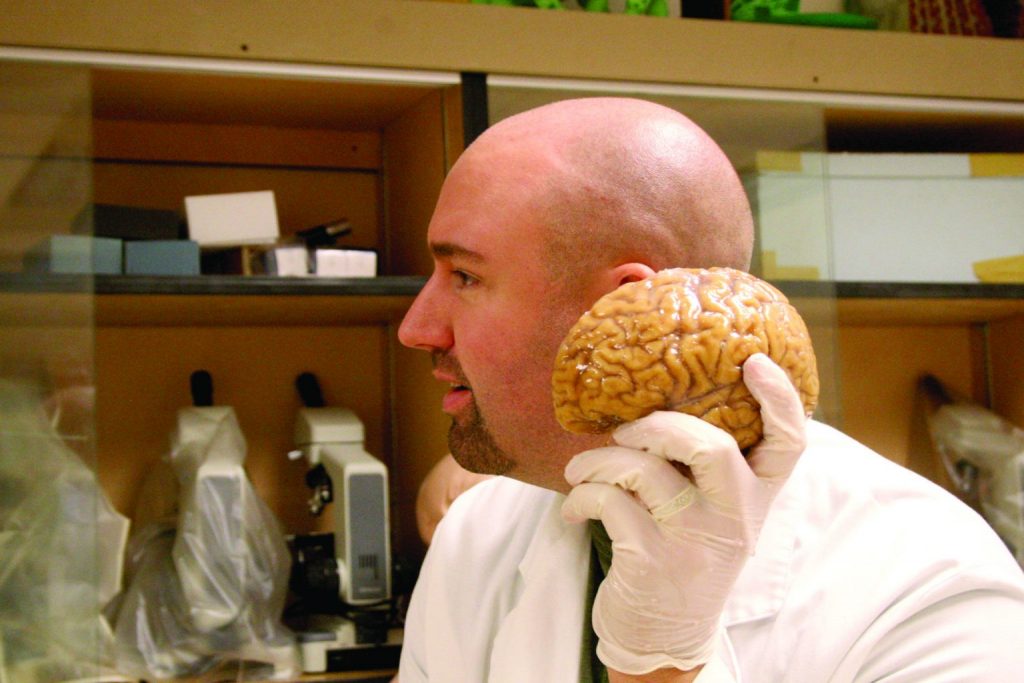Cadaver facilitates study of anatomy
Have you ever wondered what happens to your body when you die? Do your fingernails keep growing? How about your hair? Tyson Chappell, Ph.D., knows and works with people who have died on a day-to-day basis.
USU-CEU has a cadaver on campus which allows students who are taking anatomy, some biology and some physiology classes to look at how the human body works and are allowed to study it. Criminal justice students also use the cadaver to discuss and analyze autopsies.
“I’m trying to let it be used and displayed and be a learning tool for as many people as possible,” Chappell said.

This archived article was written by: Valeria Moncada
Have you ever wondered what happens to your body when you die? Do your fingernails keep growing? How about your hair? Tyson Chappell, Ph.D., knows and works with people who have died on a day-to-day basis.
USU-CEU has a cadaver on campus which allows students who are taking anatomy, some biology and some physiology classes to look at how the human body works and are allowed to study it. Criminal justice students also use the cadaver to discuss and analyze autopsies.
“I’m trying to let it be used and displayed and be a learning tool for as many people as possible,” Chappell said.
The University of Utah has a body-donor program which allows its students to analyze and study the human body. “All I had to do was call Kerry Peterson, who is in charge of the program and let him know that I needed a cadaver for my classes. He did some research to make sure that I was a professor at the college, and let me know what I needed to do. Then my wife and I went on a death date to first go out to dinner, pick up the cadaver, and drive him down to CEU,” Chappell explained.
The cadaver has been at CEU for a year and a half. In six months, Chappell will send it
Having the cadaver on campus costs the college a usage fee, which covers the embalming and the burial of the body. Once a year the weekend before memorial day the U of U has a service to give thanks to those people who donated the body their body to science the previous year.
The cadaver will be studied for about two years, and in that time, any tissue or muscle that has been taken off is collected in a bucket. When finished studying the body, it is sent back to the U and is either buried or cremated, depending on the donors final will.
The cadaver was 72 years old when he died of lung cancer. He was from New York City. Cadavers are sent as far from their home as possible so that any student studying the body does not come across someone they know or are related to.
The cadaver has been at CEU-USU for a year and a half. In six months, Chappell will send it back to the U of U, then he can request another one. “I would like to eventually have a male and a female so that the students can have the opportunity to look at both,” he said.
The cadaver is preserved with a fluid called paraformaldehde. There are also other fluids that are put on the body every couple of days so it stays moist and doesn’t grow any bacteria. The cadaver is also preserved by being covered with a plastic.
“The most common response from students who see the cadaver are: interest, awe, and excitement. A small minority of the time there is disgust, repulsion and lightheadedness, some students have passed out. And the first words students say are wow, neat, cool, and amazing. Others say gross, oh my gosh and how disgusting. But the majority see it for the beauty that it is.” Chappell said.




